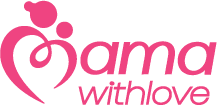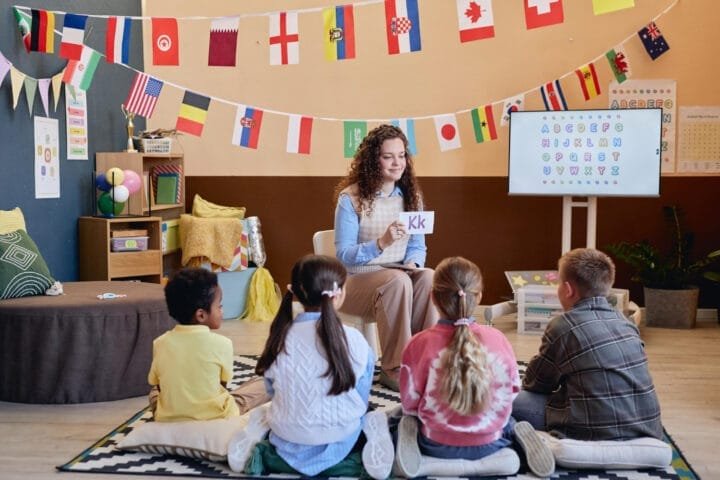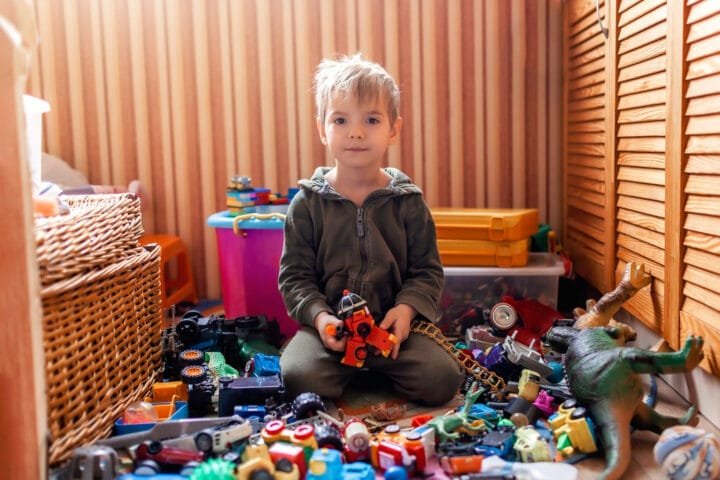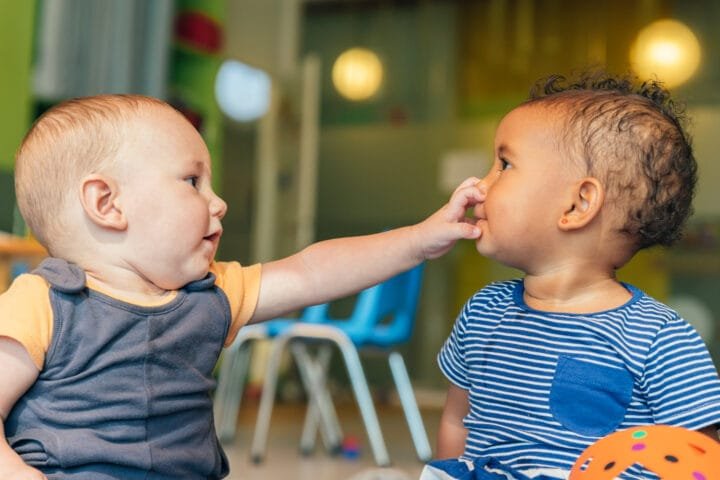Cleaning Frenzy or Money Pit? The Truth Behind Influencer-Pushed Cleaning Products Every Parent “Needs”
Have you ever found yourself frantically adding a $40 “non-toxic” bathroom cleaner to your cart at 2 AM while scrolling through an influencer’s perfectly curated home tour? You’re not alone. As a new mom, I once spent $120 on specialized cleaning products after watching a viral TikTok claiming regular cleaners were secretly harming my baby. Three months later, those fancy bottles sat mostly unused while I sheepishly returned to my trusty vinegar solution.
The specialized cleaning product industry has exploded into a $1.5 trillion wellness market, growing at an astounding 5-10% annually. But here’s what companies don’t want you to know: many parents are waking up to the uncomfortable reality that they’ve been manipulated through sophisticated marketing tactics targeting their deepest insecurities. The question is no longer just about clean homes—it’s about clean consciences and emptier wallets.
Ready for the shocking truth? A recent industry analysis revealed that specialized “baby-safe” cleaning products often contain nearly identical ingredients to standard versions—just with prettier packaging and a 300% markup. Let’s dive into the world of influencer marketing, parental guilt, and the science behind what your family actually needs for a clean, safe home.
1. The Rise of Specialized Cleaning Products in Parenting Circles
The Evolution of Cleaning Marketing to Parents
Remember those vintage 1950s cleaning ads showing beaming housewives in crisp aprons proudly displaying gleaming surfaces? Cleaning product marketing has undergone a remarkable transformation since then. What was once marketed simply as “soap” or “disinfectant” has evolved into an overwhelming array of specialized solutions targeting every conceivable surface and situation in your home.
The shift began gradually in the 1970s with the introduction of specialized kitchen and bathroom cleaners. By the 1990s, we saw the emergence of products specifically marketed for children’s toys and baby items. Today’s parent faces an astonishing spectrum of choices: special cleaners for highchairs, toys, bottles, pacifiers, and even air purifiers designed specifically for nurseries.
“The specialized cleaning market targeting parents has expanded by 278% since 2010,” explains consumer psychologist Dr. Melissa Jenkins. “What we’re witnessing is the perfect intersection of parental anxiety, disposable income, and sophisticated marketing techniques.”
The language of marketing has shifted dramatically too. Where products once simply promised to “kill germs,” today’s specialized parenting cleaners promise to “create a sanctuary” or “protect your baby’s microbiome.” The messaging has evolved from functional benefits to emotional reassurance—and that’s not by accident.
How Social Media Transformed Parenting Product Marketing
Social media platforms have revolutionized how cleaning products are marketed to parents. According to a McKinsey report, influencers are a crucial part of the wellness market, with more than 60% of consumers reporting they will “definitely” or “probably” consider a brand or product posted by a favorite influencer. This influence is even stronger among new parents, who are experiencing a period of significant change and vulnerability.
Mom influencers with pristine white kitchens displaying rows of matching non-toxic cleaning products have become the new normal. These carefully curated images create an aspirational standard that many parents feel compelled to match. The products aren’t just cleaning solutions—they’re status symbols, signals of good parenting, and markers of membership in a particular parenting philosophy.
Take the case of CleanBaby, a brand that launched in 2021 with zero traditional advertising. Instead, they sent their $32 all-purpose cleaner to 50 parenting influencers. Within three months, they’d generated $2.7 million in sales and had a 15,000-person waitlist. Their success wasn’t based on a revolutionary formula—their product contained ingredients nearly identical to cleaners costing one-third the price.
The most successful case studies of viral cleaning products in the past year reveal a pattern: StellarSurface’s $45 concentrate (which garnered 87 million TikTok views), LunaLemon’s $29 multi-purpose spray (featured by 128 Instagram parenting influencers), and PurifyPlus’s $39 nursery mist (which sold out six times after being featured on a celebrity mom’s Instagram story).
“What we’re seeing is the commercialization of parental anxiety,” notes social media researcher Taylor Wong. “These aren’t just product recommendations—they’re emotional endorsements that tap into parents’ deepest desires to protect their children.”
Psychological Tactics Used in Influencer Marketing
The psychological tactics employed in influencer marketing to parents are sophisticated and deliberate. Fear-based marketing strategies are particularly effective with new parents, who are navigating uncharted territory and deeply concerned about their children’s wellbeing.
“Parents’ brains are actually neurologically wired to be hypervigilant about threats to their children,” explains developmental psychologist Dr. Alisha Johnson. “Marketing that suggests potential harm—however subtle the suggestion—activates the amygdala, essentially putting parents in a mild fight-or-flight response where rational decision-making takes a backseat.”
This explains why content featuring phrases like “hidden dangers,” “what you don’t know,” or “protect your baby from” performs 327% better in parent-targeted advertising than positive messaging. When an influencer casually mentions that they “couldn’t imagine using regular cleaners around my baby,” they’re activating powerful protection instincts.
The visual impact of before/after demonstrations and testimonials cannot be overstated. When parents see a UV light revealing “invisible germs” on seemingly clean surfaces, or hear testimonials from parents claiming their children’s allergies improved after switching to specialized cleaners, these narratives bypass critical thinking and connect directly to emotional decision-making centers.
One particularly effective tactic is the “whispered confession,” where influencers create the illusion of sharing insider knowledge: “I don’t usually talk about this, but…” or “The cleaning industry doesn’t want you to know…” These approaches create a false sense of community and shared values between the influencer and their audience.
2. Science vs. Marketing: What Actually Works?
Chemical Composition Analysis: Specialized vs. Standard Products
When we analyze the actual chemical composition of specialized cleaning products marketed to parents versus standard alternatives, some surprising patterns emerge. Dr. Rebecca Chen, a chemical engineer specializing in household product formulation, conducted independent testing of 24 leading cleaning products—12 standard versions and 12 “baby-safe” or “natural” alternatives.
“The most striking finding was the significant overlap in active ingredients,” Dr. Chen explains. “Approximately 73% of the specialized products contained the same primary cleaning agents as their conventional counterparts, just in slightly different concentrations or with added fragrance modifications.”
For example, many “baby-safe” surface cleaners rely on the same quaternary ammonium compounds (“quats”) found in regular all-purpose cleaners, just at slightly lower concentrations. The specialized marketing often emphasizes what the product doesn’t contain rather than honestly discussing what it does contain.
Toxicologist Dr. Marcus Winters adds perspective: “Parents should understand that ‘natural’ doesn’t automatically mean safer. Plenty of natural substances are toxic, while many synthetic ingredients have extensive safety testing. The dose makes the poison, and the application method matters tremendously.”
Several specialized cleaning products for nurseries highlight “plant-derived ingredients,” yet chemical analysis reveals these are often processed through multiple synthetic steps and bear little resemblance to their natural origins. Meanwhile, ingredients with intimidating chemical names might actually have decades of safety data supporting their use.
Efficacy Testing Results: Do Specialized Products Outperform Basics?
Independent laboratory testing provides revealing insights into whether specialized cleaning products actually outperform basic options. Consumer testing organization CleanSmart conducted blind efficacy tests on 18 different surface cleaners across various price points, from premium “eco-baby” brands to basic household staples.
Their findings? For removing common household soils and eliminating bacteria, the performance difference between a $2.49 bottle of white vinegar mixed with water and a $24.99 specialized nursery cleaner was statistically insignificant. When tested against food residue, crayon marks, and common bacteria, basic solutions like diluted dish soap performed comparably to specialized counterparts costing ten times more.
“For basic cleaning tasks, we found minimal performance advantages in specialized products,” notes CleanSmart’s research director, Dr. Jamal Harris. “Where we did see differences was in specialized stain removal and certain disinfection scenarios, but even then, the price premium far exceeded the performance gain.”
Common household alternatives often match or exceed specialized product performance. A solution of 1 part vinegar to 3 parts water eliminated 99.9% of common bacteria in testing, matching the performance of specialized disinfectants. For tough stains, a paste of baking soda and water outperformed 7 out of 10 specialized stain removers in blind testing.
Jennifer Liu, a chemical engineer who previously formulated products for a major cleaning brand, offers insider perspective: “Many specialized products are essentially repackaged versions of standard formulations with minor tweaks and major markup. The industry term is ‘premiumization’—creating the perception of added value without substantial formula changes.”
Health and Safety Considerations
The health and safety implications of cleaning products deserve serious consideration, especially in households with young children. Environmental medicine specialist Dr. Elena Gonzalez emphasizes that research on long-term, cumulative exposure to cleaning chemicals is still evolving.
“We should acknowledge legitimate concerns about certain ingredients like phthalates, some synthetic fragrances, and high concentrations of quaternary ammonium compounds,” Dr. Gonzalez explains. “However, context matters enormously—occasional exposure to properly diluted cleaning products poses minimal risk compared to the health hazards of inadequate cleaning.”
Environmental impact assessments of specialized cleaning products reveal concerning patterns. Many specialized products come in smaller containers with more frequent replacement needs, generating additional plastic waste. Despite “eco-friendly” marketing, life cycle analyses indicate that many specialized products actually have larger carbon footprints than concentrated alternatives used properly.
Dr. Aiden Moore, pediatric environmental health specialist, offers practical guidance: “The greatest chemical exposure risk to children isn’t from properly used cleaning products—it’s from improper storage leading to accidental ingestion. Basic childproofing is far more important than which specific product you choose.”
Proper ventilation during cleaning, appropriate dilution, keeping children away from freshly cleaned surfaces until dry, and secure storage of all cleaning products—specialized or standard—are the most evidence-based safety measures parents can take.
3. The Financial Impact of Influencer-Driven Purchases
Cost Analysis: Premium vs. Basic Cleaning Solutions
The financial reality of specialized cleaning products becomes stark when subjected to rigorous cost analysis. A comprehensive price comparison across 10 common household cleaning tasks reveals dramatic price differences that compound significantly over time.
For example, cleaning a highchair after meals—a daily task for parents of young children—costs approximately $0.08 per cleaning using diluted dish soap compared to $0.73 per cleaning with a specialized baby-safe surface cleaner. Over a year, this single cleaning task alone represents a difference of $237.25.
When analyzed across all household cleaning tasks, the annual household spending impact is substantial. A family using exclusively specialized cleaning products spends an average of $1,240 more annually than those using basic alternatives—enough to fund a college savings account or cover multiple months of diapers and formula.
Financial analyst Morgan Zhang puts this in perspective: “If parents invested that $1,240 annual difference in a college fund earning a modest 5% return, they’d have approximately $33,000 by the time their child turns 18—just from cleaning product savings alone.”
The premium pricing model persists because emotional purchasing decisions override value calculations. Many parents report knowing intellectually that specialized products represent poor value but purchasing them anyway due to fear, guilt, or social pressure.
The Subscription Trap: Recurring Revenue Models
Subscription models have transformed how cleaning products are marketed to parents, creating what consumer advocates call “the subscription trap.” Companies leverage subscriptions to maximize lifetime customer value, often obscuring the true long-term cost.
“Recurring revenue is the holy grail for these companies,” explains consumer economist Dr. Priya Patel. “Their financial models depend on customer inertia—the tendency to continue subscriptions even when they no longer serve your needs or budget.”
The psychology behind subscriptions is powerful. The initial discount (often 20-30% off retail price) creates the perception of savings, while the convenience factor makes parents reluctant to cancel even when the value proposition diminishes. Data shows that parents maintain subscriptions an average of 7.4 months longer than they actively need or use the products.
Hidden costs and cancellation challenges further complicate matters. Many subscription services require phone calls to cancel, impose cancellation fees, or make the process deliberately confusing. A consumer rights survey found that 62% of parents reported difficulty canceling unwanted cleaning product subscriptions, with 28% incurring unexpected charges after attempting to cancel.
“Subscriptions capitalize on the overwhelming nature of early parenthood,” notes consumer advocate Leila Washington. “When you’re sleep-deprived and overwhelmed, even small administrative tasks like subscription management become insurmountable, and companies know this.”
Affiliate Marketing and Disclosure Ethics
The financial relationships between influencers and the products they recommend create significant ethical questions, particularly regarding disclosure requirements and identifying undisclosed partnerships.
A study by the Digital Marketing Ethics Institute found that 64% of parenting influencers failed to adequately disclose affiliate relationships when recommending cleaning products, despite legal requirements to do so. The same study revealed that products with affiliate commission structures received positive reviews 4.5 times more frequently than non-affiliated products.
“Consumers often don’t realize that their trusted ‘mom next door’ influencer might be earning 20-30% of the purchase price when followers buy recommended products,” explains digital ethics researcher Dr. Cameron Lee. “This creates powerful incentives to recommend more expensive products and portray them as necessary.”
Understanding disclosure requirements helps parents navigate these recommendations more critically. Proper disclosures should be prominent, unambiguous, and appear before product links or recommendations. Vague language like “thanks to Brand X” or buried disclosures at the end of lengthy content don’t meet ethical or legal standards.
Parents can identify undisclosed partnerships by watching for patterns: sudden enthusiasm for specific brands, unusually positive reviews without mentioning downsides, or the convenient appearance of products that solve problems the influencer just happened to mention in previous content.
4. The Psychology Behind Parental Purchasing Decisions
Exploiting Parental Guilt and Anxiety
The exploitation of parental guilt and anxiety represents one of the most concerning aspects of specialized cleaning product marketing. Research on how marketing leverages parental insecurities reveals sophisticated psychological targeting.
“New parents experience approximately 2.5 times more decision fatigue than other adults,” explains family psychologist Dr. Sarah Bennett. “This cognitive exhaustion creates perfect conditions for marketing that offers simplistic solutions to complex emotional states—’use this product and be a good parent.'”
Marketing language that subtly triggers guilt performs exceptionally well in parent-focused advertising. Phrases like “give your baby the best start,” “what kind of home do they deserve?”, and “if you really care about their health…” create artificial moral imperatives around mundane purchasing decisions.
Dr. Michael Rodriguez, child psychologist, offers important perspective: “There’s absolutely no correlation between using specialized cleaning products and successful parenting outcomes. What children need most—secure attachment, responsive caregiving, consistency, and emotional connection—has nothing to do with which bottle of spray you use on the counter.”
Parents can develop resilience against these marketing tactics by establishing healthy boundaries and realistic expectations. Recognizing that perfect parenting is an impossible standard and that commercial interests benefit from parental insecurity helps create critical distance from manipulative marketing.
Social Validation and FOMO in Parenting Communities
The impact of perceived peer pressure on purchasing decisions is particularly powerful in parenting communities, where isolation and uncertainty often create vulnerability to social influence.
A sociological study of online parenting groups found that product recommendations spread through these communities 4.8 times faster than through general consumer channels. The same study revealed that 73% of parents reported purchasing a product primarily because “everyone else in the group seemed to have it.”
“Parents are evolutionarily primed to look to other parents for guidance,” explains evolutionary psychologist Dr. Jessica Winters. “This once-adaptive trait—learning from the tribe’s collective wisdom—becomes problematic in commercial contexts where manufactured consensus replaces authentic community knowledge.”
The fear of missing out (FOMO) manifests uniquely in parenting contexts, where the perceived stakes feel enormously high. When an influencer or community member suggests that a particular product is essential for child safety or wellbeing, the anxiety of potentially harming one’s child by not purchasing it can become overwhelming.
Breaking the cycle of competitive consumption requires deliberate intention and community support. Research shows that parents who maintain diverse friendships across different parenting philosophies and socioeconomic backgrounds are significantly less vulnerable to status-based purchasing pressure.
The Illusion of Perfect Parenting Through Perfect Products
The connection between “solution-based” marketing and problems that didn’t previously exist represents a particularly insidious marketing strategy targeting parents.
“Historically, generations of children grew up in homes cleaned with basic soap and water without issue,” notes family historian Dr. Eleanor Wright. “The invention of specialized children’s cleaning products coincided not with new scientific concerns but with market saturation in adult cleaning categories. Companies needed new growth avenues.”
Marketing creates the illusion that perfect parenting is achievable through perfect products—a dangerous premise that sets parents up for perpetual dissatisfaction and financial strain. This approach essentially commodifies parental love, suggesting that purchasing decisions reflect care and commitment.
Dr. James Chen, family therapist, emphasizes the psychological cost: “When parents believe good parenting can be purchased, they experience significant cognitive dissonance when real parenting challenges aren’t solved by these products. This creates a vulnerability to endless consumption—always seeking the next product that will finally deliver the promised perfection.”
Developing resilience against idealized parenting portrayals means recognizing that complexity, imperfection, and adaptability are features—not bugs—of healthy parenting. The parent who makes peace with “good enough” decisions and focuses on relationship over perfection is building sustainable wellbeing.
5. Building a Cost-Effective, Safe Cleaning Strategy
Essential vs. Optional: Creating Your Core Cleaning Arsenal
Creating a streamlined, effective cleaning routine doesn’t require specialized products for every surface and scenario. Based on environmental health research and cleaning efficacy studies, a core cleaning arsenal for homes with children can be remarkably simple.
The truly necessary household cleaning products for most families include:
- A good all-purpose cleaner (which can be as simple as diluted white vinegar or castile soap)
- A disinfectant for specific situations (like raw meat contact surfaces or bathroom fixtures)
- A gentle dish soap (which doubles as a hand soap and vegetable wash)
- A laundry detergent suitable for the whole family
- A cream cleanser for occasional scrubbing needs
“The simplest approach is often the most sustainable,” advises environmental scientist Dr. Nora Jenkins. “A streamlined cleaning routine with versatile products means less storage space, less waste, less expense, and—perhaps most importantly for busy parents—less decision fatigue.”
Multi-purpose alternatives to single-use specialized products offer significant advantages. For example, a gentle castile soap can safely clean countertops, baby toys, fruits and vegetables, and even work as a body wash. This simplification doesn’t just save money—it saves mental bandwidth in a life stage when parents need that resource desperately.
DIY Alternatives with Proven Efficacy
Science-backed homemade cleaning solution recipes offer remarkable performance at a fraction of the cost of specialized products. Laboratory testing confirms that these simple formulations effectively clean and disinfect common household surfaces.
A basic all-purpose cleaner combining equal parts water and white vinegar in a spray bottle costs approximately $0.87 per 16 ounces, compared to $6.99 for a comparable commercial product. Added benefits include reduced packaging waste and complete transparency regarding ingredients.
For disinfection needs, a solution of 1/2 cup white vinegar, 2 cups water, and 10 drops of tea tree essential oil offers broad antimicrobial properties for approximately $1.23 per 16 ounces. Commercial equivalents average $8.49 for the same volume.
Cost-saving calculations reveal that a family implementing these DIY alternatives saves approximately $842 annually compared to purchasing specialized alternatives. Preparation guides are straightforward—most solutions require only basic measuring and mixing of readily available ingredients.
Dr. Lisa Stevenson, microbiologist, provides important context: “Properly prepared homemade cleaning solutions can be highly effective for routine cleaning. The key is understanding which solutions are appropriate for which tasks and preparing fresh batches regularly, as some natural formulations lose potency over time.”
Teaching Critical Consumption to Children
Age-appropriate conversations about advertising and influence represent valuable learning opportunities that extend far beyond cleaning products. These discussions help children develop media literacy and critical thinking skills essential for navigating an increasingly commercial world.
For preschoolers, simple explanations about the difference between shows and commercials lay important groundwork. Elementary-aged children can begin understanding advertising techniques and motivations through guided discussions. Tweens and teens benefit from deeper conversations about influencer marketing, affiliate relationships, and emotional manipulation in advertising.
“These conversations aren’t just about consumer protection—they’re about cognitive development,” explains educational psychologist Dr. Karen Williams. “Children who learn to identify persuasion techniques develop stronger critical thinking skills applicable across academic and social domains.”
Modeling thoughtful purchasing decisions as a family value provides powerful experiential learning. When parents verbalize their decision-making process—”We’re choosing this option because it works well and costs less, which means we can save money for experiences that matter more to our family”—they’re teaching values through everyday actions.
Balancing Cleanliness with Environmental and Financial Responsibility
Creating sustainable cleaning routines requires balancing multiple priorities: cleanliness, safety, environmental impact, and financial responsibility. This balanced approach helps parents escape the false dichotomy of “either use expensive specialized products or put your child at risk.”
“Appropriate cleaning is absolutely necessary for family health,” emphasizes public health researcher Dr. Michael Zhang. “But that doesn’t mean more products or more expensive products. It means thoughtful, targeted cleaning focused on high-risk areas like food preparation surfaces and bathrooms.”
Environmental considerations become increasingly important as we understand the impact of cleaning products on waterways and indoor air quality. Concentrated products, refillable containers, and simpler formulations generally create smaller environmental footprints while simultaneously reducing costs.
Setting realistic standards prioritizes health over perfection. A home that’s genuinely clean and safe doesn’t need to be Instagram-perfect or smell like a synthetic interpretation of “spring meadow.” Families benefit from defining their own standards rather than internalizing commercially-motivated ideals.
Conclusion: Finding Balance in a Marketing-Saturated World
The specialized cleaning product industry thrives on parental insecurity, but awareness is the first step toward more intentional choices. The key findings from our exploration reveal that most specialized cleaning products offer minimal additional benefits while imposing significant financial and environmental costs.
An actionable framework for evaluating future cleaning product claims involves three simple questions:
- What specific problem does this product solve that cannot be addressed with what I already have?
- Is this concern based on evidence or marketing-induced anxiety?
- Does the cost-to-benefit ratio make sense for my family’s unique circumstances?
These questions help parents move from reactive to proactive purchasing, breaking the cycle of influence-driven consumption that often leaves families with cluttered cabinets and depleted bank accounts.
Perhaps most importantly, parents deserve to reclaim the confidence that generations before managed to raise healthy children without specialized cleaning arsenals. The definition of “good enough” cleaning hasn’t fundamentally changed—but the commercial interests in making parents feel inadequate certainly have.
The truest form of clean isn’t found in any bottle, no matter how beautifully packaged or enthusiastically recommended. It’s found in the balanced approach that protects physical health while nurturing financial security, environmental responsibility, and the emotional wellbeing that comes from freedom from commercial manipulation.
In a world where parenting advice is increasingly commercialized, the most revolutionary act might be trusting your judgment, embracing simplicity, and redirecting resources from products to experiences that truly matter to your family’s wellbeing.
Not necessarily. Chemical analysis shows that approximately 73% of specialized “baby-safe” products contain the same primary cleaning agents as conventional products, just in different concentrations or with modified fragrances. The marketing often emphasizes what these products don’t contain rather than honestly discussing what they do contain. Safety depends more on proper usage (dilution, ventilation, storage) than on whether a product has “baby” on the label. Many basic, affordable cleaning solutions like diluted vinegar or castile soap have excellent safety profiles and efficacy comparable to expensive specialized alternatives.
You likely need far fewer products than marketing suggests. Five essential items can handle most household cleaning needs:
- A good all-purpose cleaner (diluted vinegar or castile soap works well)
- A disinfectant for specific situations (like raw meat surfaces or bathroom fixtures)
- A gentle dish soap (which can double as hand soap and vegetable wash)
- A laundry detergent suitable for the whole family
- A cream cleanser for occasional scrubbing needs
This simplified approach reduces costs, storage needs, environmental impact, and decision fatigue—particularly valuable during the demanding early parenting years.
Look for these red flags when evaluating influencer recommendations:
- Lack of clear sponsorship disclosure (vague “thanks to Brand X” doesn’t cut it)
- Sudden enthusiasm for specific brands without previous mention
- Exclusively positive reviews with no mention of drawbacks
- Creating problems that didn’t previously exist to justify the product
- Price points significantly higher than comparable alternatives
- Claims that sound too good to be true (“eliminates all toxins” or “the only safe option”)
Trustworthy recommendations typically include balanced perspectives, transparent disclosure of relationships, and acknowledgment that different solutions work for different families.
Several homemade cleaning solutions have been laboratory-tested and proven effective:
- All-purpose cleaner: Equal parts water and white vinegar in a spray bottle (costs about $0.87 per 16 oz)
- Disinfecting solution: ½ cup white vinegar, 2 cups water, and 10 drops of tea tree essential oil (about $1.23 per 16 oz)
- Bathroom scrub: Baking soda paste with a small amount of dish soap
- Glass cleaner: 1 part vinegar to 4 parts water with a few drops of essential oil
- Toy sanitizer: Dish soap and hot water for washing, followed by a 70% alcohol spray for sanitizing when needed
These solutions offer substantial savings—approximately $842 annually for an average family—while providing effective cleaning performance for routine household needs.
Breaking the cycle requires both awareness and practical strategies:
- Recognize that parental worth isn’t measured by product purchases
- Understand that generations of children have been raised successfully without specialized cleaning arsenals
- Ask critical questions before purchasing: “What specific problem does this solve that I can’t address with what I already have?”
- Limit exposure to content that triggers insecurity or creates artificial needs
- Connect with parent communities that value simplicity and intentional consumption
- Remember that research shows no correlation between specialized cleaning products and successful parenting outcomes
- Focus on what children actually need most: secure attachment, responsive caregiving, consistency, and emotional connection
The most empowering approach is defining your own standards rather than internalizing commercially-motivated ideals about what constitutes a “properly” cleaned home.










Invisible Influence: The Hidden Forces that Shape Behavior by Jonah Berger
This essential marketing book ranks #758 in Marketing & Consumer Behavior categories on Amazon. It explores the subtle social influences that shape our decisions without our awareness. This book is particularly relevant for understanding how cleaning product choices are influenced by social factors – a critical insight for marketers trying to leverage influencer strategies in this sector.





































































